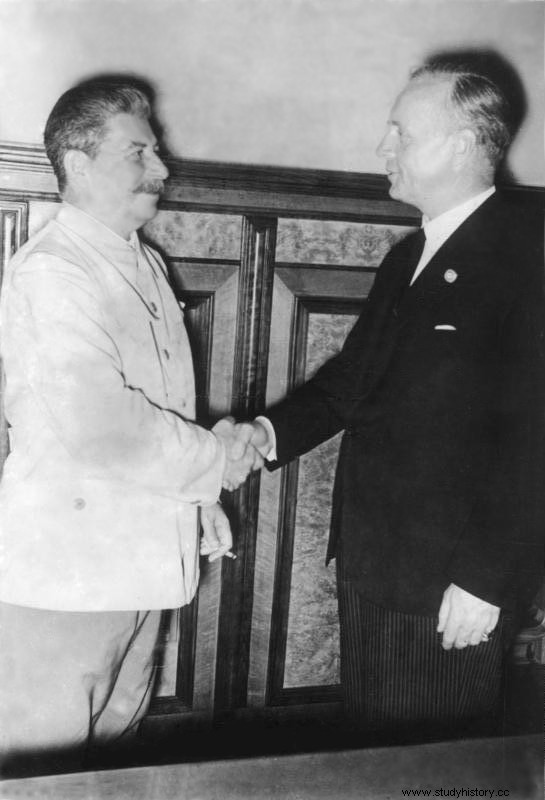- The Munich Accords of September 1938, signed by Germany, France, the United Kingdom and Italy, “saved the peace” by granting Hitler the Sudetenland. But this one, despite its promises, continues to expand.
- War seems imminent between, on the one hand, France and Great Britain, and on the other, the German Reich. We do not yet know what role the USSR, a real pivot, will play.
August 23, 1939

Characters
Joachim von Ribbentrop
Vyacheslav Molotov
Procedure
The German-Soviet non-aggression pact was signed on August 23, 1939 by Joachim von Ribbentrop, German Foreign Minister, and his Soviet counterpart Vyacheslav Molotov.
The two powers agree not to attack each other, either directly or indirectly. If one of the two countries is attacked, the other must not interfere in this conflict and must ensure a position of neutrality.
Poland should theoretically be separated into two parts, one for each side, and the countries to the east of it are assigned to the USSR, except for Lithuania, declared a zone of German influence.
Consequences
- The partition of Poland took place after the invasion of the two great powers in September 1939.
- The territories to the east of Poland, as well as the eastern part of it fell under the Soviet yoke in 1940:they were annexed by the USSR.
- Germany only recovers the western part of Poland and a part of Lithuania.
- This pact allows Germany to move its troops to the western front, facing France, in view of the future confrontation 10 days later and the invasion of May 1940.
- It was not until June 1941 that the pact was broken, when Hitler launched Operation Barbarossa and attacked the USSR.
